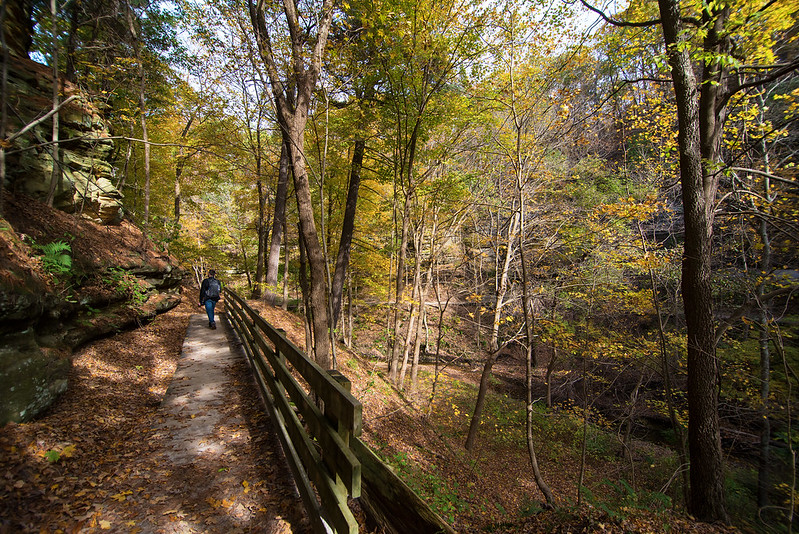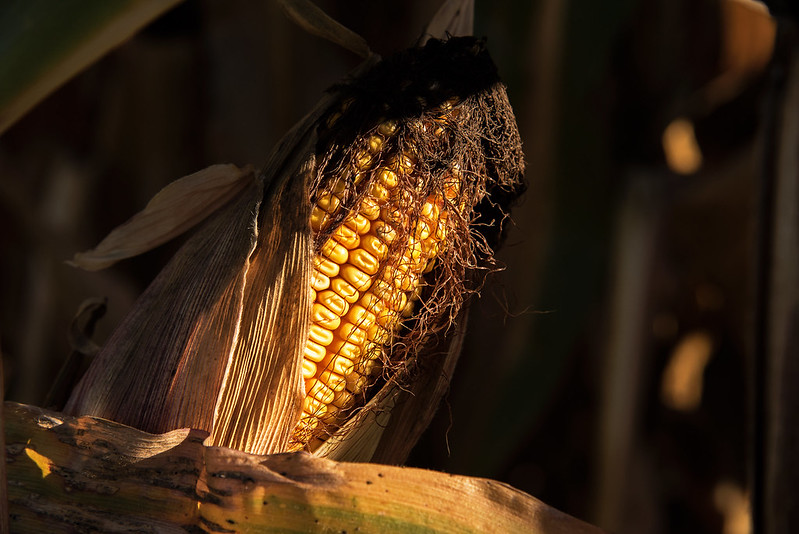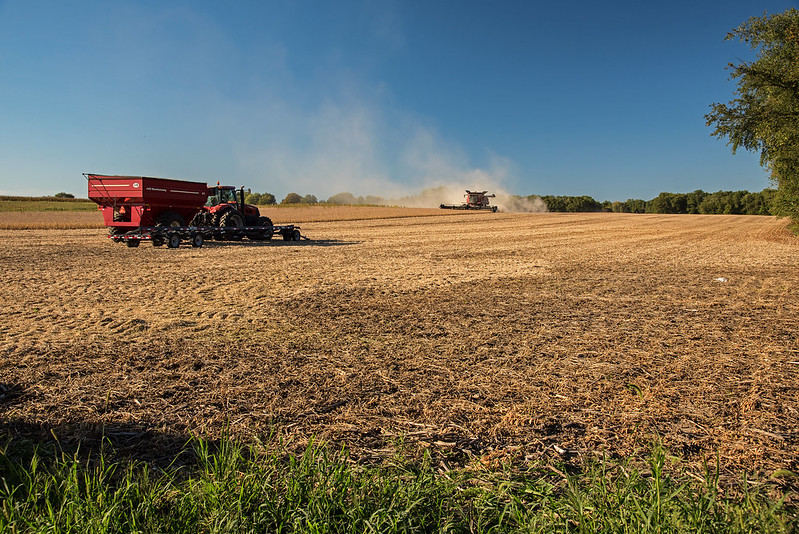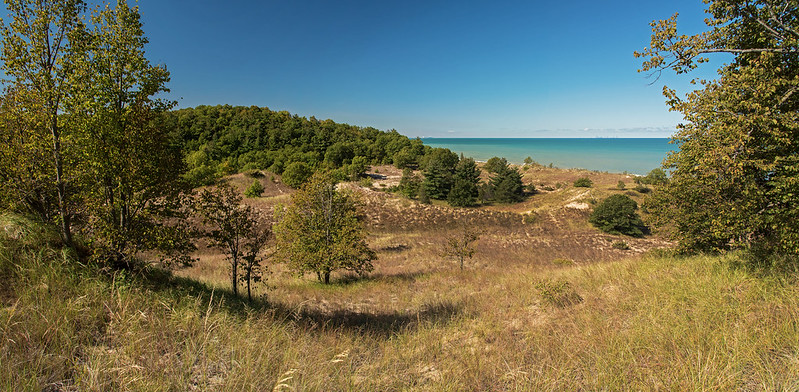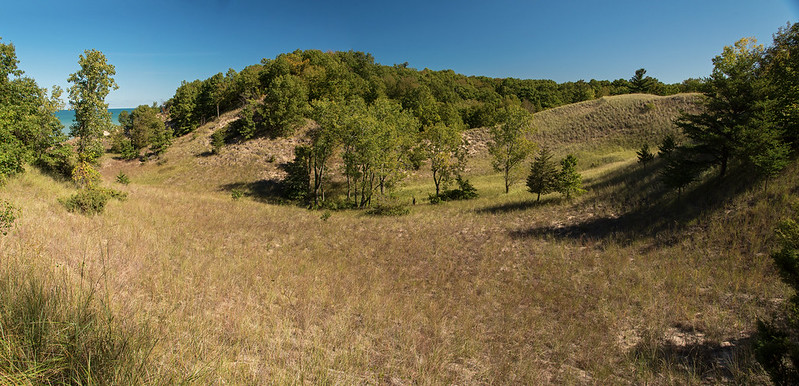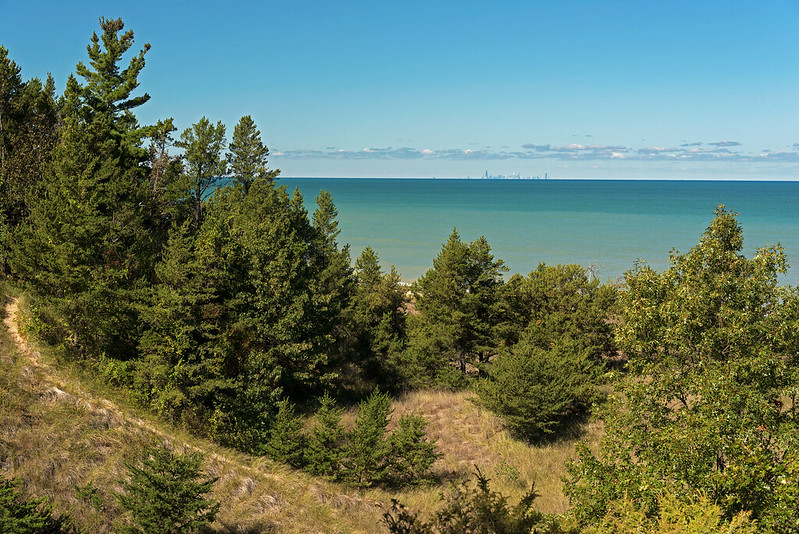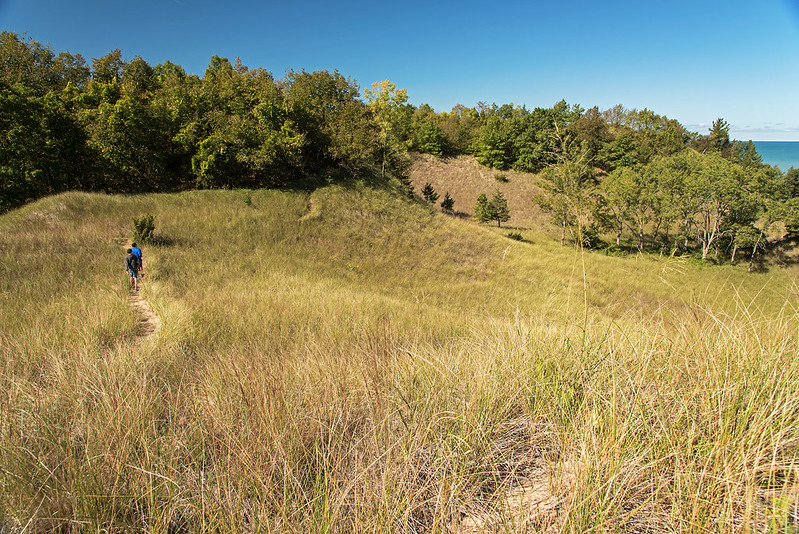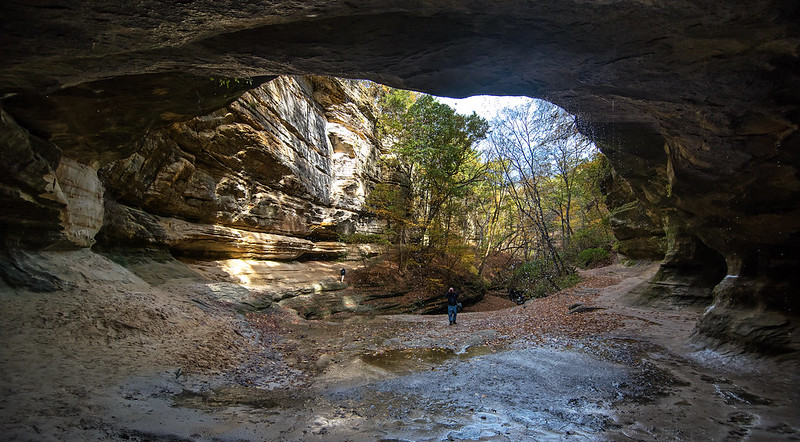
One of the longer hikes at Starved Rock is to LaSalle Canyon, a blind canyon where visitors must hike behind the waterfall to continue on the trail. The water cascades over an overhang carved thousands of years ago by running water. Generally just a soft trickle of water, at times when rain is plentiful, the waterfall can increase in flow.
Winter is one of the best times to visit this canyon. The falls turn to ice and create a wall in the center of the overhang. Hiking behind the ice falls is spectacular.
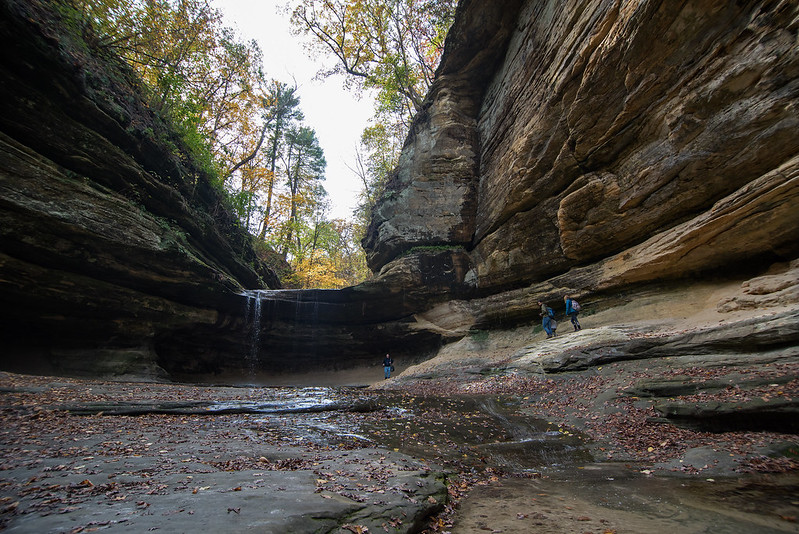
While not the deepest or longest canyon in the park, LaSalle Canyon is certainly worth the hike. The multicolored St. Peter sandstone walls, green leaves and moss create an environment more suited to southern islands. In fact, even in winter, lichen, moss, and ferns often stay green, and I've seen dozens of insects crawling and flying in the snow covered canyons.
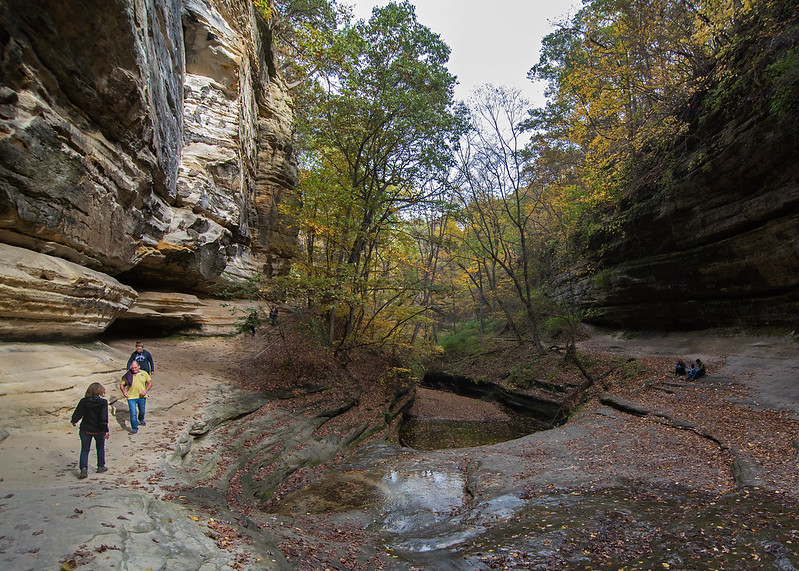
Once off the main overhang of rock, the water flows on the canyon floor, down a few gentle drops, and finally into a round pool which eventually flows out to the Illinois River. This serene pool is the perfect location for a short rest, or even a backpack lunch.
